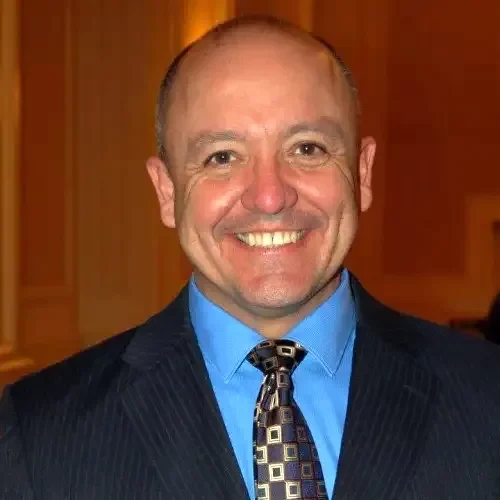Maintaining your Team

The Top, Middle, and Bottom Parts of Your Team
The ability to motivate people is an ongoing challenge for managers and supervisors. Having been a supervisor since 1998, I soon realized how important it was to keep your people working diligently and proactively. My experience supervising people has ranged from specialized teams, patrol deputies, city administrative teams, and detectives. Each team, while similar in nature, have a number of similarities.
I have a personal assessment of teams and groups when it comes to their ability to contribute to the team and organization. It is my belief that most of our teams, whether they are considered elite or more humble in nature, fall into the following general categories.
The top 10 percent is the group of people that I love to work with. They are the conscientious workers that go well beyond what is considered the status quo. They go far beyond minimal work and routinely exceed expected standards. They are proactive and when given a task; they complete it on time and with few revisions. They are a resource to be counted upon, but not to the point of using them excessively that they burnout due to their workload. The balance and proper delegation of tasks will help you keep this top ten group from burning out.

You should have the following considerations for this top ten percent of your team:
- What made them so successful?
- Could they be tasked with additional duties?
- Are they being asked to do much more work than the rest of the team?
- What can I do to support them?
The middle 80 percent is a group of opportunity. Many of our people will do the work,but we must convey our intentions and expectations to them. Communication is key with these groups as it is with any other group of people.

However, if we do not let this group know what our expectations are, then we may experience that the mission may drift away from the expectations of the team.
With this middle part of the group, consider the following:
- What parts of this group gravitate towards the top group?
- Could they become part of the top ten?
- How can I help them get there?
- What parts of this group gravitate towards the bottom group?
- What is the potential for them to become part of the bottom group?
- How can I mitigate their migration to the bottom group?
The bottom 10 percent is the part of our teams that can take up a significant part of our time and efforts as a supervisor. This ten percent can infect the other 90 percent. While the top ten may be more resilient to this negative infection, the middle 80 percent is much more vulnerable to it. Your diligence in containing the negativity generated by this group is a necessary effort. Failing to focus on the effects of this group may severely impact your team, or potentially your entire organization. Reflect on the following:
- Why is this group not performing?
- What skill sets are not being utilized to contribute to the success of the entire group?
- Is the groups’ non-performance due to:
- Stagnation?
- Excessive Tenure?
- Attitude?
- Fear?
- Lack of Training?
- Poor Supervision?
- Lack of Direction?

Prior to taking action for your group, consider the questions above and develop a series of your own questions that are specific to the different parts of the team. Ask yourself the difficult questions. You could role play and ask the questions that you believe your supervisor would ask of you about your team.
Developing questions is a good process to experience in order to solve a problem. Take some well thought out and calculated risks when developing a problem-solving strategy.
We understand that seeking solutions for problems which come from our teams involves diligence, proactivity, and creativity. Trying to solve team problems in the same fashion, with the same procedures, and same methodology may not be the most effective approach. Many times, our most difficult employees require attention and diligence, but in many instances, a new approach is needed. You may be one of many supervisors who have taken the same approach with the problem team or individual. The result; nothing has changed. Challenge yourself to initiate a different approach in solving team issues. The good part of taking a different path is you will force yourself to think and consider different perspectives outside of your comfort zone. Comfort is the enemy of progress. Growth takes place when we challenge ourselves to do better. Plus, we owe it to ourselves, our teams, and our organizations to make our teams better. I am a firm believer in learning as broadly as possible. Learning can take place while talking to people; reading print and electronic sources; and watching all types of media. Try not to discount a source of information, there may be an all-encompassing solution that you will discover. One of the many discoveries that I’ve made is from the works of Leonardo Da Vinci. I was reading The Explorers by Martin Dugard, which is a fascinating story about two men trying to discover the source of The Nile River. I loved the book, but I discovered a potential solution for solving problems while reading about the adventures of two men exploring Africa. It addressed the difficulties of trying to find solutions to an impossible problem. We all have seemingly impossible problems on our teams and in our lives. Da Vinci had a potential solution for me to use. I had to follow up and see if it was a viable process.
I soon learned that Da Vinci was a prolific painter and inventor who had an incredible propensity for curiosity. His creations went well beyond the Mona Lisa. His curiosity led him down a variety of paths and accomplishments. He provided an approach to creative risk taking. These questions were to be used in solving insurmountable problems. We have all experienced the insurmountable or extremely difficult situation to mitigate. These questions can be a good starting point for solving your team related problem.
- What is the problem?
- When does it need to be solved?
- Who would benefit the most from the problem being solved?
- How can I motivate myself to solve this problem?
- Where haven’t I looked for answers?
- Why is solving the problem important?
- What if this turned out to be the best thing that ever happened to me?
These questions can be applied to a variety of problems in our personal and professional lives. Use them as a guide and build upon them to make them work for your team. The effort is well spent. Target a part of your team where you can have success. Build upon the initial success and move onto more problems which need to be solved. The process may take time, but it is worthwhile.
I challenge you to identify the top, middle and bottom parts of your teams. Identify an issue which needs to be addressed to make the team better. Start small and build toward positive change. Small successes lead to positive change. Your team will be better for it.

Al Cobos
Al Cobos is the owner and lead consultant for Dychelon which improves team performance and promotes successful team building. Al has successfully built teams over the past two decades. He has over thirty years of public sector experience in addition to teaching for several universities. His focus is to improve people in their personal and professional lives.